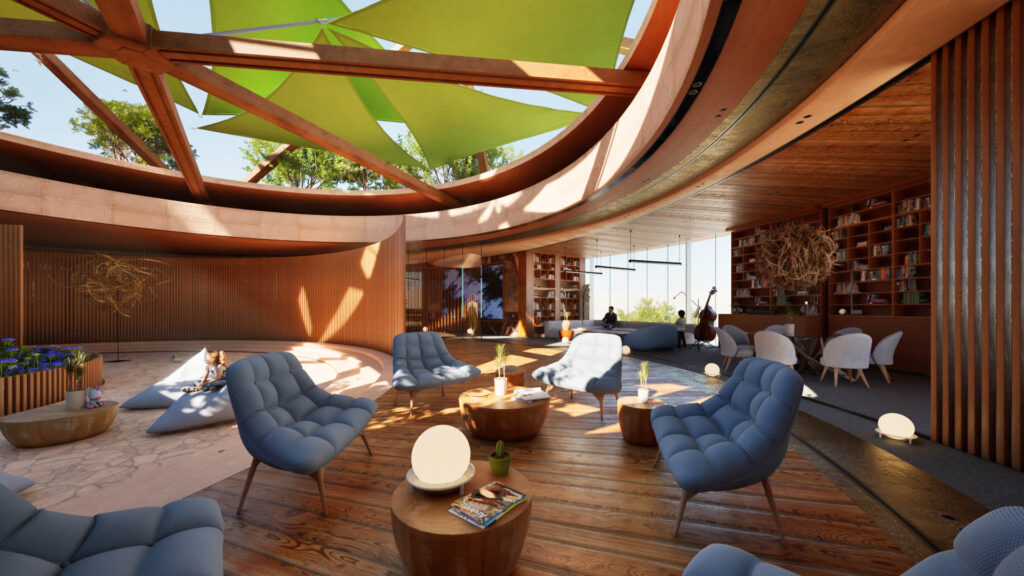The dynamic global illumination and reflections system from Unreal Engine 5 brings new levels of realism to the real-time viz tool.
Epic Games had added Lumen, Unreal Engine 5’s dynamic global illumination and reflections system, to Twinmotion 2023.2, the latest release of its AEC-focused real-time visualisation tool.
Lumen enables indirect lighting to adapt on the fly to changes to direct lighting or geometry — for example, changing the sun’s angle with the time of day or opening an exterior door. According to Epic Games, it brings new levels of realism to real-time applications, and enables stills and videos to be rendered with close to path-traced quality, but in a fraction of the time.
Twinmotion 2023.2 also includes the ability to import Adobe Substance 3D parametric materials in the SBSAR file format and store them in the Twinmotion library; these could be materials created by the user in Substance Designer, or ones from many of the material libraries available in this format.
All exposed parameters are available to edit in the Twinmotion Properties panel—for example, users could separately change the stitching colour and the main colour on a piece of fabric, and adjust the stitch length. Textures are generated on the fly when tweaks are made.
Users can also paint and scatter far more asset types, including Sketchfab, Quixel, Us-er Library, and most of the Twinmotion library assets. According to Epic Games, this allows you to dress your scene in record time. Previously, this was limited to just the vegetation section of the Twinmotion library.
Twinmotion 2023.2 also offers Early Access to a new feature that allows for the import of ani-mated FBX, glTF, and GLB files to create ‘more advanced, bespoke, and believable experiences’. Architects can use their own animations, or animated files from Sketchfab.
Also new is support for Local exposure, which mimics the way a person’s eyes react to different lighting conditions, preserving details in shadows and highlights. According to Epic Games, it’s especially useful for challenging high-dynamic-range scenes, for ex-ample ones that include both dark interiors and bright exteriors in the same view.
Meanwhile, enhancements to existing features include path-traced transparency for water materials, improved weather particles for more realistic rainy and snowy scenes, and an optimised clear glass material for faster rendering.
Finally, new WebVR support for Panorama Sets uploaded to Twinmotion Cloud means that project participants can launch and navigate them with full immersion from teth-ered or untethered VR headsets.






